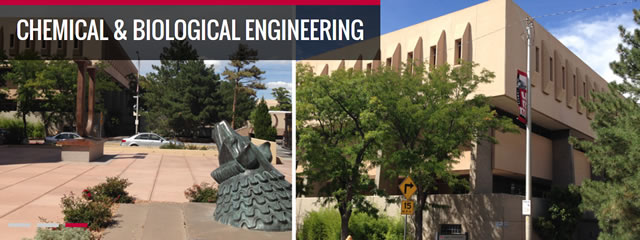
Chemical and Biological Engineering ETDs
Publication Date
1971
Abstract
Simple, dependable methods for the generation of aerosols are necessary to many forms of research. Specifically inhalation research has a requirement for sub-micron sized insoluble particles.
Two different methods for the production of oxide aerosols from vaporizable compounds were tried. The first method, a modification of the Rapaport-Weinstock generator (R3), consisted of nebulization of a solution into a droplet mist. Next the droplets were vaporized, and condensation nuclei formed from the nonvaporizable impurities in the solution. The vapor was allowed to condense on the nuclei in a relatively large chamber, then the resulting liquid droplet aerosol was dried and converted to the oxide form in a high temperature heating column. The second method was new, in that, compounds in the solid state, were vaporized, and then condensed on nuclei. Condensation nuclei for this method were provided by either of two different techniques. The first one consisted of the nebulization of dilute metal nitrate solutions, followed by drying, and then degradation to the oxide form. In the second, a part of the vapor from the solid compound was directly converted to the oxide. The procedures of condensation, and ultimate conversion to the oxide, were carried out in a manner identical to the first method. This method shows great promise for the production of very small oxide particles, of minimal size distribution.
Both methods were used to generate oxide aerosols of aluminum, cobalt, lanthanum, yttrium or zirconium, with particle diameters ranging from 0.018 to 1.08 microns. The major results of, and the important conclusions drawn from the work were:
- Due to hydrate formation, only limited droplet evaporation was achieved using the first method, this resulted in the formation of particles with a large size distribution. A baffle within the condenser was found to screen out the largest and smallest particles, resulting in the production of more uniform sized particles.
- Method two, in which condensation nuclei were formed by partial degradation of the vapor, produced small particles (from 0.018 to 0.078 microns in diameter). This method is suitable for the generation of sub-micron sized radioactive oxide aerosols, and withJI1inor modifications it could be used for the production of monodispersed aerosols.
Document Type
Thesis
Language
English
Degree Name
Chemical Engineering
Level of Degree
Masters
Department Name
Chemical and Biological Engineering
First Committee Member (Chair)
Richard E. Dascher
Second Committee Member
James H. Turner
Third Committee Member
Thomas T. Castonguay
Fourth Committee Member
George Heinz Quentin
Fifth Committee Member
George M. Kanapilly
Recommended Citation
Larsen, Tom B.. "Preparation Of Metallic Oxide Aerosols By Vaporization And Degradation Of Organic Compounds." (1971). https://digitalrepository.unm.edu/cbe_etds/94
